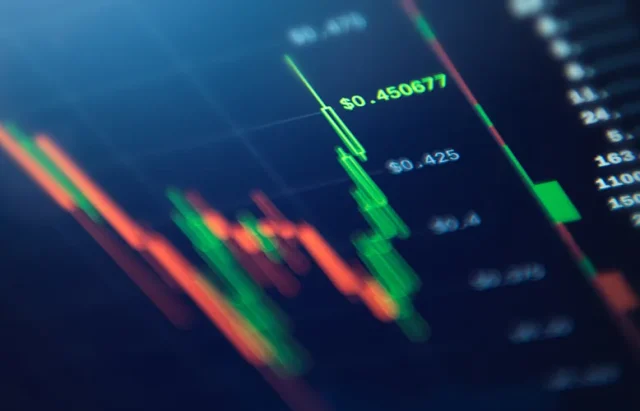
Exploring the world of automated trading software has been a fascinating journey for me. These sophisticated tools have revolutionised the way we approach trading, offering both seasoned traders and newcomers the chance to engage with the markets more efficiently. The allure of letting algorithms handle complex analyses and execute trades with precision is undeniable.
While automated trading software promises increased efficiency and the potential for profit, it’s essential to weigh these benefits against potential drawbacks. I’ve found that understanding the software’s capabilities and limitations is crucial in making informed decisions. This balance of pros and cons can empower traders to harness technology’s full potential while remaining mindful of the inherent risks.
Navigating this digital landscape has taught me that, with the right knowledge and strategy, automated trading can be a valuable ally in achieving financial goals. It’s about embracing innovation while maintaining a clear understanding of the trading environment.
Understanding Automated Trading Software
Exploring automated trading software has been a fascinating journey. I’ve discovered how it revolutionises trading for both seasoned professionals and beginners.
Definition and Functionality
Automated trading software, or algo trading, uses algorithms to trade financial instruments. It processes large data sets with incredible speed. Unlike human traders, it never succumbs to fear or greed. Backtesting is key to refining trading strategies before live application. By simulating trades using historical data, traders can optimize their strategies. This ensures more reliable performance when applied to real market conditions.
Historical Development
Automated trading software has roots in the 1970s. It started with simple strategies focused on moving averages. By the 1980s, more complex systems emerged. Advances in technology, particularly computing power, spurred further development. High-frequency trading then became possible. Now, sophisticated algorithms can execute trades in microseconds. This evolution transformed how trades are made, offering unprecedented speed and efficiency.
Exploring the Pros of Automated Trading Software
Efficient and Speedy Trades
Speed excites me with automated trading software. It executes trades far quicker than any human can. This quick response allows it to seize fleeting market opportunities others might miss, especially in volatile conditions. I find speed a clear advantage during high-frequency trading sessions.
Eliminating Emotional Bias
I’ve always struggled to keep emotions in check while trading. Automated trading software handles this effortlessly. It follows rules without succumbing to fear or greed. I appreciate how this maintains discipline and consistency in my trading decisions, reducing the risk of emotional mistakes.
Backtesting Capabilities
Backtesting empowers me with confidence. With automated trading software, I test strategies against historical data before risking real money. This practice refines my approach and increases my strategy’s success rate. It’s reassuring to know a strategy’s strengths or weaknesses.
Increased Market Opportunities
Markets operate round the clock. Automated trading software opens doors to opportunities beyond my watch. It continuously scans markets and executes trades even when I’m away. This constant vigilance ensures I never miss potential gains, significantly enhancing my trading reach.
Delving into the Cons of Automated Trading Software
Navigating the pitfalls of automated trading software requires caution. Drawing from my own experiences, I know that being aware of its limitations is as crucial as understanding its benefits.
Technical Failures
Technical failures in automated trading can disrupt trading significantly. Connectivity issues often plague even the most stable systems, preventing timely trade executions. I recall a time when a server failure led to a missed market opportunity. Such glitches highlight the importance of maintaining robust backup plans. Power outages or system crashes can paralyse trades, too, leading to unintended positions. This can be costly, and I always ensure an uninterruptible power supply for my setup.
Over-Optimisation Issues
Over-optimisation in trading algorithms creates unrealistic expectations. I’ve seen traders fall into the perfection trap, designing systems that only perform well historically. This presents a problem because market conditions are rarely static. Instead, I’ve found a balanced approach, avoiding overfitting to past data, to be more effective. Over-optimising can lead to systems that falter in live trading. Real-time results often differ dramatically from backtested scenarios.
Cost and Complexity
Implementing automated trading systems involves significant costs. From acquiring the software to ongoing maintenance, expenses add up quickly. I’ve experienced the challenge of navigating complex configurations, too, which require a certain technical expertise. The sophistication of these systems mandates competent handling. Often, what seems a simple tweak can demand considerable time and skill. Budgeting for these resources is integral to successful trading ventures.
Evaluating the Impact on Traders
I’ve witnessed how automated trading software reshapes my trading approach. The impact varies, influencing human insight and trading strategies. Let’s explore these changes and their effects.
Role of Human Insight
Human insight remains essential. I noticed machines handle calculations, but my intuition adds value. Automated systems execute trades, yet they can’t assess external factors like geopolitical events. My experience informs decisions beyond the software’s scope. I balance tech and insight. Doing so, I integrate analytics and personal judgment, achieving better outcomes. My understanding of market nuances complements algorithm speed. This human-machine synergy enhances my overall strategy.
Changes in Trading Strategies
My trading strategies evolved with automated tools. The software optimises performance, targeting precise market conditions. Manual tasks, once demanding, are now streamlined. I adjust strategies based on software output, refining my approach continuously. This shift in workflow simplifies analysis, targeting better entries and exits. I appreciate how automation provides consistent testing across scenarios. The integration aids strategy development, ensuring I’m well-prepared for dynamic market shifts. This evolution in technique boosts my competitive edge.
Weighing the Pros and Cons of Automated Trading Software
I’ve delved into the nuances of automated trading, finding both benefits and challenges. Such software can revolutionise trading for many, but it’s essential to understand where human insight is irreplaceable.
Balancing Automation and Manual Processes
In my trading journey, I’ve learned that blending automation with manual input elevates my strategy. While algorithms handle vast data sets without bias, my personal insights play a role when assessing market news. This balance allows me to remain agile, adapting to new information quickly.
Sometimes, automated systems miss contextual nuances. By integrating manual review, I catch trends the software might overlook. This dual approach has enriched my trading, leveraging speed and precision without losing the human touch that often sparks strategic breakthroughs.
Determining Suitability for Different Traders
For different traders, the suitability of automated trading varies. Novices might find it overwhelming without guidance, while seasoned traders benefit from its advanced algorithms. I found that beginners should start slow, supplementing system guidance with mentoring, while experts can integrate it deeply for optimal efficiency.
New traders leveraging automated tools need to focus on education. I gained insights by combining software capabilities with learning resources, enhancing my trading skills significantly. Experienced traders might see gains in efficiency, accessing broader opportunities and refining strategies amid changing conditions.
Conclusion
Automated trading software offers a dynamic blend of speed and precision that can transform trading strategies. While it’s clear that algorithms can process data without emotional interference, the human element remains vital in interpreting broader market trends. It’s crucial to approach automation with an understanding of both its potential and its limitations, ensuring that technical issues or market shifts don’t catch you off guard. By balancing algorithmic efficiency with personal insight, you can enhance your trading performance. Whether you’re just starting out or are a seasoned trader, integrating automated tools with your own expertise can provide a robust framework for navigating the complexities of financial markets.





